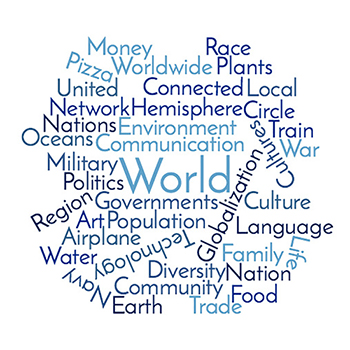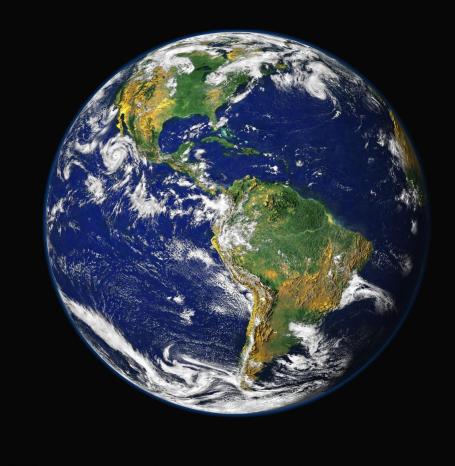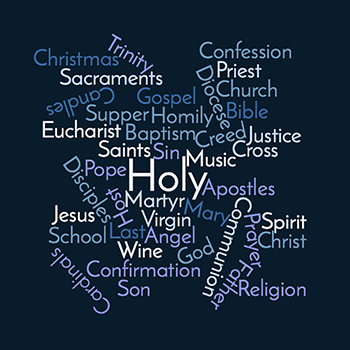I have written about the challenges and opportunities of developing a course with few precedents. Unlike, “Introduction to World Religions” or “Introduction to Christianity,” one of the challenges for teachers of “Global Catholicism” is that there are few models to follow in setting up a syllabus. For students, there are few expectations concerning the material they will need to know to demonstrate competency and progress in a field. We are not exactly working with a blank slate in RELS 199-01, but the boundaries defining what is relevant to our conversations about “Global Catholicism” are flexible. I am keen to use this flexibility to our advantage.
I began our first class session with an exercise designed to draw students in and encourage them to take an active role in playing with the boundaries around the field of Global Catholicism: I asked them to brainstorm words that they associate with “Global” and “Catholicism.” To begin, I drew two circles around these terms on the dry-erase board in the classroom. Our challenge was to fill each circle. Once the students got going, it wasn’t hard and we made quick work of my circles. Here are the terms we came up with:
| Catholicism |
|
|
| Global |
 |
The exercise accomplished two things. First, it gave me a sense for the ways that students might end up being challenged when they learn about different ways of living Catholicism. Students associated Catholicism with social justice, suggesting that they were familiar with Catholic liberation theology. In contrast, glossolalia, healing, and miracles were absent from our brainstorm list, suggesting that Charismatic Catholicism will be a challenge for them to wrap their heads around.
Second, I hoped that students would get a sense that they can take advantage of the openness of this field. The exercise might lead them to think more about concepts and experiences that pop into their heads not only during the brainstorm, but throughout the semester. In this way, they might feel invited to come up with arguments defending the issues they feel are relevant to the study of Global Catholicism.
We started this process at the end of the exercise: we tried to identify ways in which terms in the two groupings could be linked to each other. For instance, one student noticed that we associated “water” with “Global” and Catholic baptism rituals use water. The “Holy Family” might also be a “Global Family” another student said. Finally, we ended this part of the class session laughing about the idea of “Pizza” and the “Eucharist” as global foods. I think the laughter meant something deeper, though: that, as scholars, pushing ourselves to think in creative ways about the objects, processes, and people we learn from can be surprising and even discomfiting, but, in the end, personally transformative.

